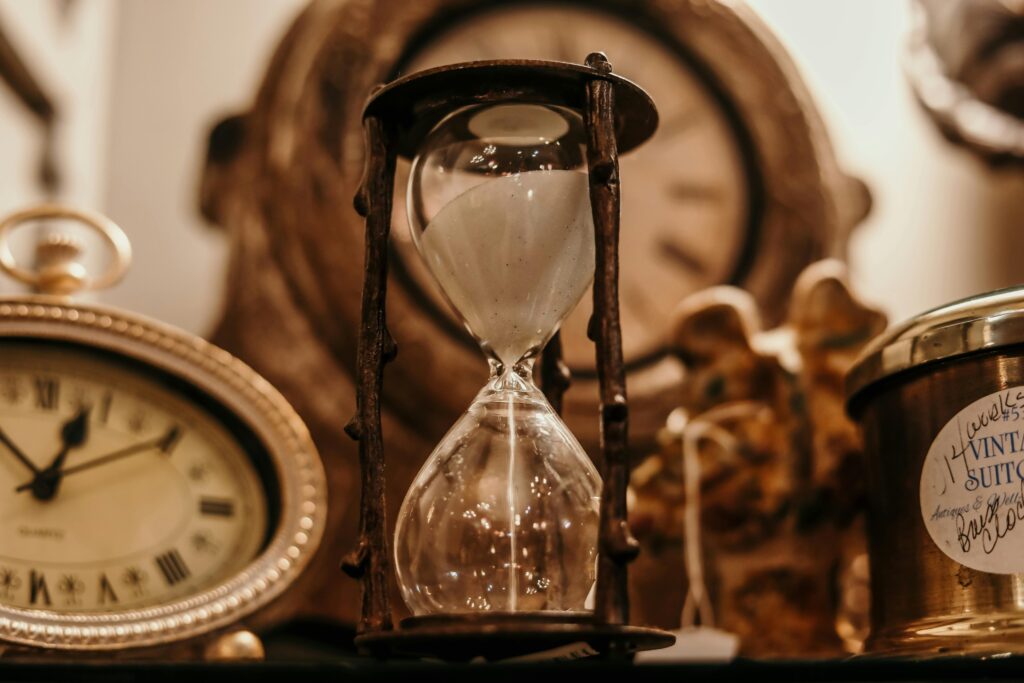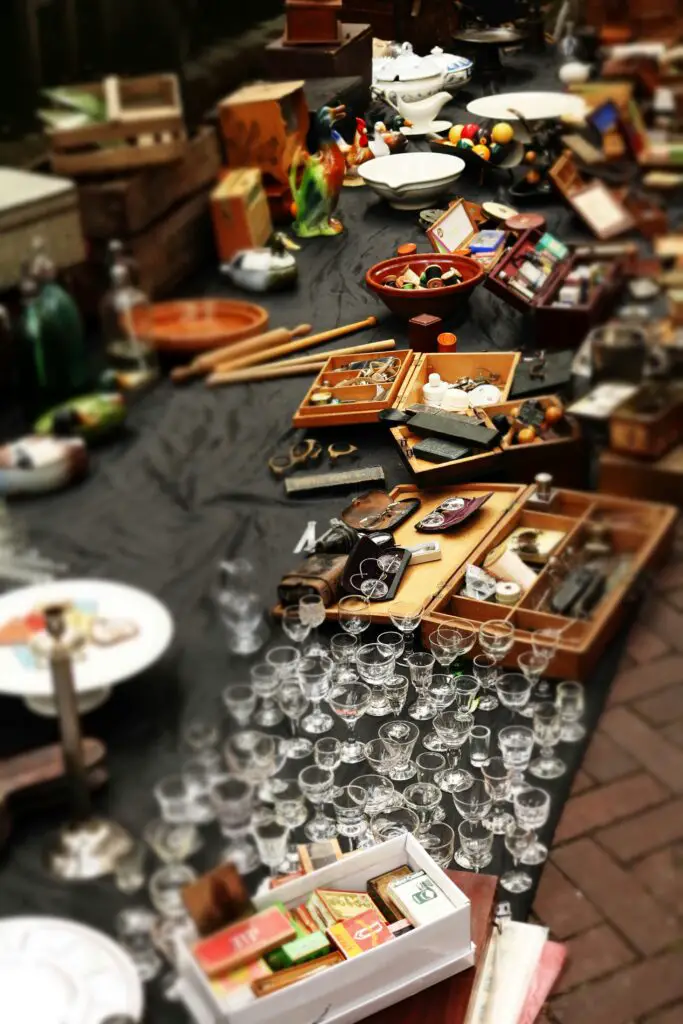1. Start by Assessing the Value of Your Collection

Before diving into selling, it’s crucial to know the true value of your antique collection. Not all items are worth the same, even if they look similar. To get an accurate idea, consider getting a professional appraisal. You can also research online through auction sites or antique dealers to see what similar items are selling for. Knowing the value will help you avoid underselling your treasures, and you’ll be more confident in setting prices that reflect their worth.
2. Focus on Collecting Quality, Not Quantity
If you’re still building your collection with the intention of eventually selling, remember that quality trumps quantity. Rare, high-quality items tend to appreciate in value over time, while more common pieces might not. Look for pieces in excellent condition or those with a unique history. Buyers often seek well-preserved or rare items that tell a story, so the more exclusive your collection, the higher the profit potential.
3. Research the Best Selling Platforms
There are many places to sell antiques, from online platforms to in-person markets. Websites like eBay and Etsy are popular for selling individual pieces, while specialized platforms like Ruby Lane cater specifically to antique collectors. If you prefer face-to-face sales, antique fairs or flea markets can offer an immediate audience of interested buyers. Choose a platform that best suits your collection’s style and value to ensure you’re reaching the right audience.
4. Understand Market Trends
Antique market trends change over time, and understanding what’s in demand can help maximize your profits. For example, mid-century modern furniture may be hot one year, while Victorian-era pieces might see a resurgence the next. Stay updated on which categories of antiques are currently popular by following online forums, social media groups, and auction house reports. Adapting your sales strategy to these trends can make the difference between a quick sale and having an item linger unsold.
5. Take High-Quality Photos
First impressions matter, especially when selling online. High-quality photos are essential to attract buyers. Make sure to take clear, well-lit pictures from multiple angles to highlight details and any unique features. Include close-ups of marks, signatures, or any imperfections that might affect value. Good photos not only help sell your items faster but also build trust with potential buyers by showing transparency.
6. Write Detailed, Honest Descriptions
When listing your items, detailed descriptions are just as important as good photos. Include information about the item’s age, condition, origin, and any historical significance. Be honest about any damage or repairs, as transparency is key to building trust with your buyers. The more information you provide, the more confident buyers will feel in making a purchase, which can lead to quicker sales and better offers.
7. Set Competitive but Fair Prices

Pricing your antiques can be tricky—set prices too high, and you might scare off buyers; set them too low, and you’ll miss out on profits. Start by researching the market to see what similar items are selling for. If you want to sell quickly, consider pricing your items slightly lower than competitors. On the other hand, if you have time and believe your items are rare or in demand, don’t be afraid to hold out for a higher price.
8. Build an Online Presence
In today’s digital age, having an online presence can greatly expand your reach. Start by creating social media profiles for your antique business or collection. Platforms like Instagram and Facebook are perfect for sharing beautiful photos and connecting with potential buyers. Join antique-related groups or forums where collectors gather to discuss and trade items. The more visible you are, the more opportunities you’ll have to connect with interested buyers and build a following.
9. Network with Other Collectors and Dealers
The antique world thrives on connections. Networking with other collectors and dealers can open up opportunities to sell or trade your pieces. Attend antique fairs, flea markets, and auctions to meet others in the community. Not only will this help you learn more about the industry, but you might also find potential buyers or partners interested in your collection. Building relationships in the antique world can lead to referrals and sales opportunities you wouldn’t have found otherwise.
10. Offer Certificates of Authenticity
If your collection includes high-end or rare items, offering a certificate of authenticity can make your pieces more attractive to buyers. Certificates reassure collectors that they are purchasing genuine antiques, especially for items like artwork, jewelry, or furniture. If you don’t already have these, consider hiring a professional appraiser who can verify the authenticity of your pieces and provide documentation.
11. Consider Consignment for High-Value Items
For particularly valuable or rare pieces, consignment can be an excellent option. Working with reputable antique shops or auction houses allows you to tap into their expertise and buyer networks. In exchange for a percentage of the sale, they’ll handle much of the work, including marketing, pricing, and negotiating with buyers. This can be a stress-free way to sell your most prized possessions while ensuring you get top dollar.
12. Use Social Media Ads to Reach More Buyers
If you’re selling online, using social media ads can help you reach a larger audience. Platforms like Facebook and Instagram allow you to target ads to specific demographics, such as collectors or antique enthusiasts. Even a small advertising budget can significantly increase visibility and bring in more potential buyers. Well-targeted ads can make the difference between a slow sale and a bidding war over your items.
13. Consider Holding a Pop-Up Sale or Auction
If you have a large collection and want to sell many items quickly, consider holding a pop-up sale or auction. Hosting a sale, either in person or online, can create a sense of urgency and excitement among buyers. Auctions, in particular, can drive up prices as buyers compete for rare items. You can partner with local antique shops or use online auction platforms to reach a wider audience and turn your passion into a profitable event.
14. Invest in Packaging and Shipping
If you’re selling online, safe and secure shipping is crucial to ensuring customer satisfaction. Antique items are often fragile, and damage during shipping can lead to negative reviews or lost profits. Invest in high-quality packaging materials, such as bubble wrap, foam, and sturdy boxes, to protect your items. Always insure your shipments, especially for high-value items, to cover potential losses. Offering reliable shipping will build trust with buyers and encourage repeat business.
15. Create a Business Plan
If you’re serious about turning your antique collection into a business, creating a business plan is essential. Outline your goals, target audience, and sales strategies. Consider how you’ll source new items, where you’ll sell them, and how you’ll market your collection. Having a clear plan in place will help you stay focused and organized, ensuring your passion for antiques translates into a profitable venture.
16. Maintain Accurate Records for Taxes and Inventory

As you start selling more items, keeping accurate records becomes critical for both inventory management and taxes. Track your sales, including how much you paid for each item and what it sold for. This will help you calculate your profits and stay on top of your finances. Additionally, consult with an accountant to ensure you’re following any tax laws related to selling collectibles. Staying organized will save you time and stress down the line.
17. Stay Passionate and Keep Learning
Selling antiques can be a rewarding business, but it’s important to remember why you started collecting in the first place. Keep your passion alive by continuing to learn about your items and their history. Stay up-to-date on market trends and immerse yourself in the antique world. The more knowledgeable and enthusiastic you are, the more likely buyers will be drawn to your collection. Plus, your passion will make the process of selling more enjoyable and fulfilling.
Turning your passion for antiques into profit is entirely possible with the right strategies in place. From assessing your collection’s value to connecting with buyers through online platforms, there are plenty of ways to ensure you get the most out of your beloved items. Stay informed, stay organized, and most importantly, stay passionate—after all, that’s what makes collecting so special in the first place!


